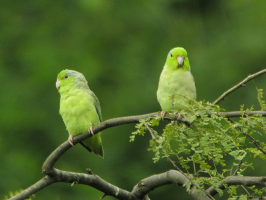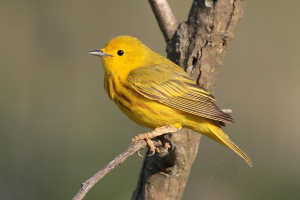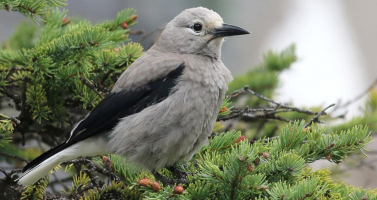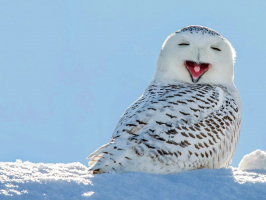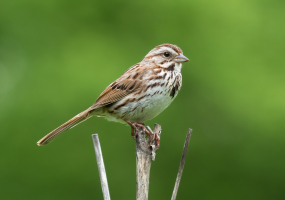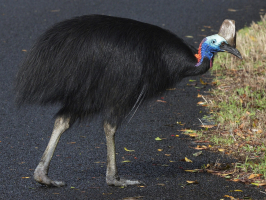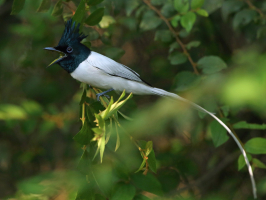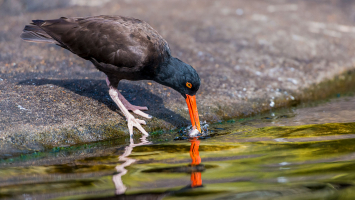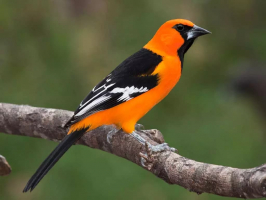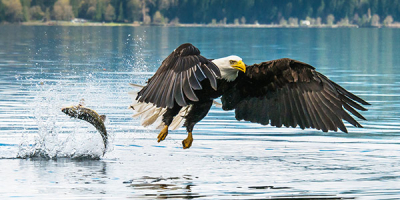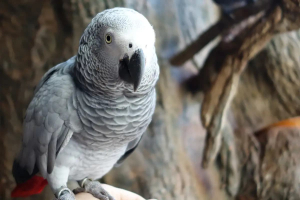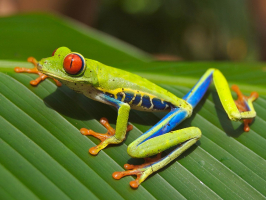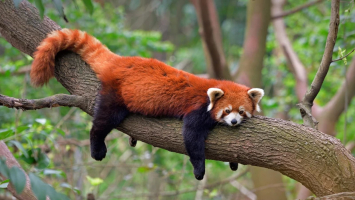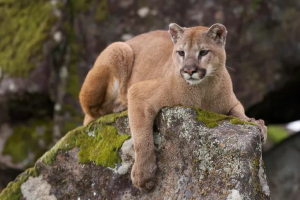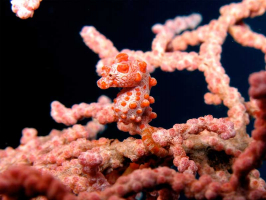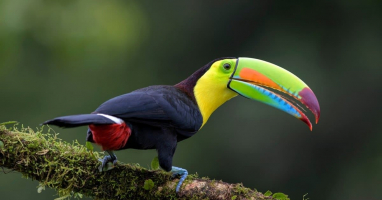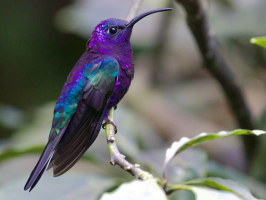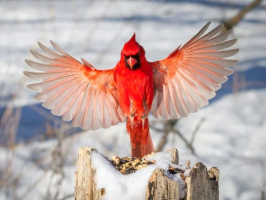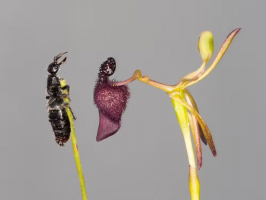Top 10 World's Beautiful Pink Birds
According to the study conducted, there are approximately there are more than 11,000 bird species have been identified and described today. All these bird ... read more...species occur in different colors, shapes, sizes, and behavior. Numerous stunning birds with pink plumage or feathers can be found among the many different hues of birds. Below is a list of the most beautiful pink birds in the world, let's find out!
-
The Pink-headed Warbler (Cardellina versicolor) is a small passerine bird found in the southwestern highlands of Guatemala and the central and southeastern highlands of the Mexican state of Chiapas. Like other New World warblers, the pink-headed warbler is an insectivore, gleaning insects and other invertebrates from vegetation (primarily in dense understory) and making aerial sallies after flying prey. It typically forages between 2–5 m off the ground, seldom foraging above 7 m — except during the breeding season, when the male may hunt near the tops of trees from which it sings, as high as 15 m up.
The pink-headed warbler weighs 10 g and is 12.5–13.5 cm long. Although the plumage of the two sexes is identical, females tend to be a little bit duller overall. The adult's upper parts are dark red, its chest is silvery-pink, and its underparts are pinkish-red. With a reddish forehead, darkish lores, and dark brown eyes, it has a silvery-pink head. Its legs are flesh-colored, and its bill is somewhat blackish, occasionally displaying some horn color on the lower mandible. The underparts of the juvenile are a paler, richer brown color. But that feathering quickly molts away. By the end of the summer, juvenile birds can only be distinguished from adults by their unossified skulls.
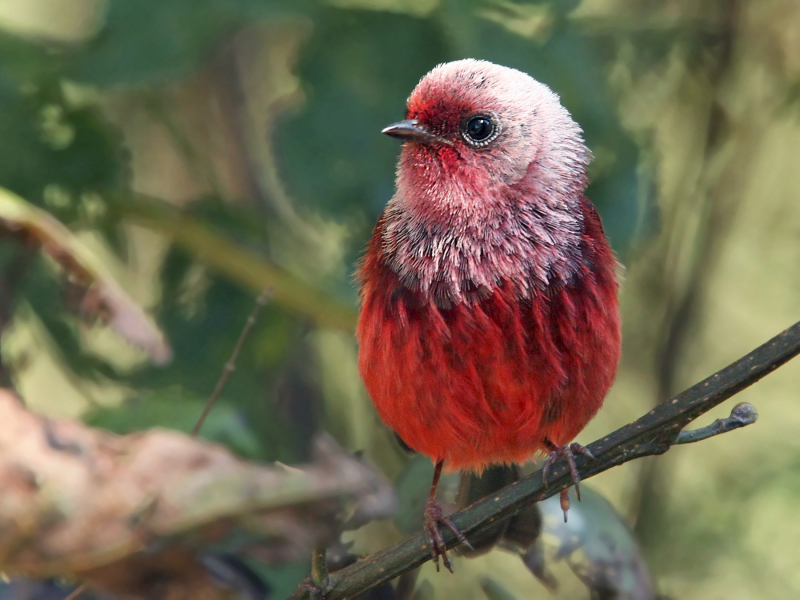
eBird 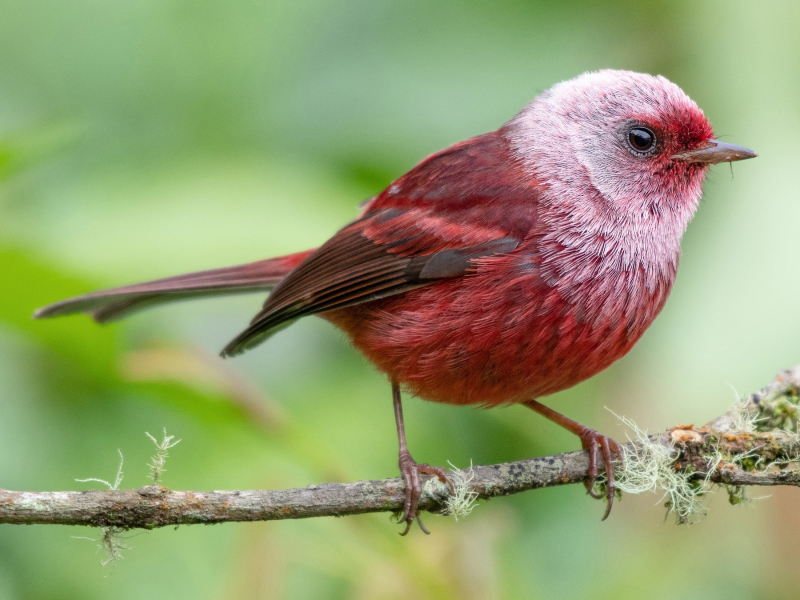
eBird -
Bourke's Parrot (Neopsephotus bourkii, formerly known as Neophema bourkii), also known as the blue-vented parrot, sundown parrot, pink-bellied parrot, Bourke's parakeet, Bourke or "Bourkie", is a small parrot found in Australia and the only species in its genus, Neopsephotus. They forage on the ground and in bushes for grasses and seeds, most active feeding at dusk and dawn. Due to their diet, the Bourke's parrot works as a known seed disperser.
The Bourke's parrot is a species that is not very large. They typically range in length from 18 to 23 cm, with a tail that is around 9 cm long. Males of the species weigh between 47 g and 49 g, whereas females of the species weigh between 41 g and 49 g, making them slightly smaller than the males on average. Up until the age of nine months, both sexes resemble each other quite a bit before developing their complete plumage colors. The Bourke's parakeet has a brown overall coloration with a pink abdomen, pinkish breasts, and a blue rump while it is in the wild. Dark-brown legs with zygodactyl toes are seen. It has a yellowish-brown bill. The adult male has a blue forehead while the adult female has a little or no blue on the forehead. The Bourke's parrot's feathers help it blend in with the reddish soil of its arid home.
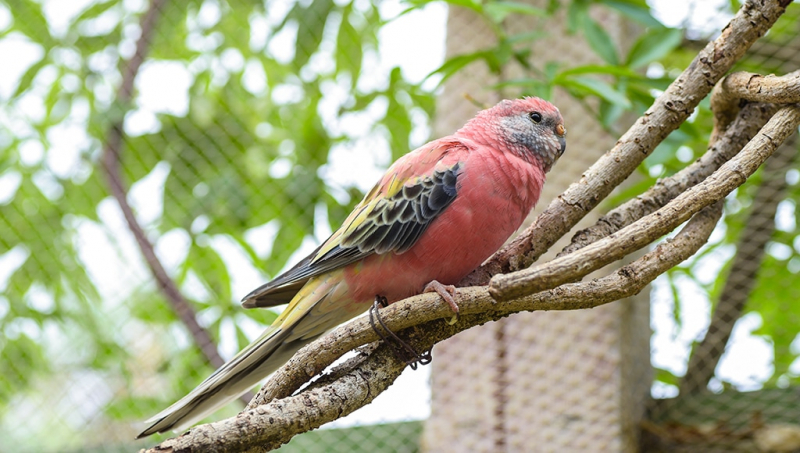
Animal of Things 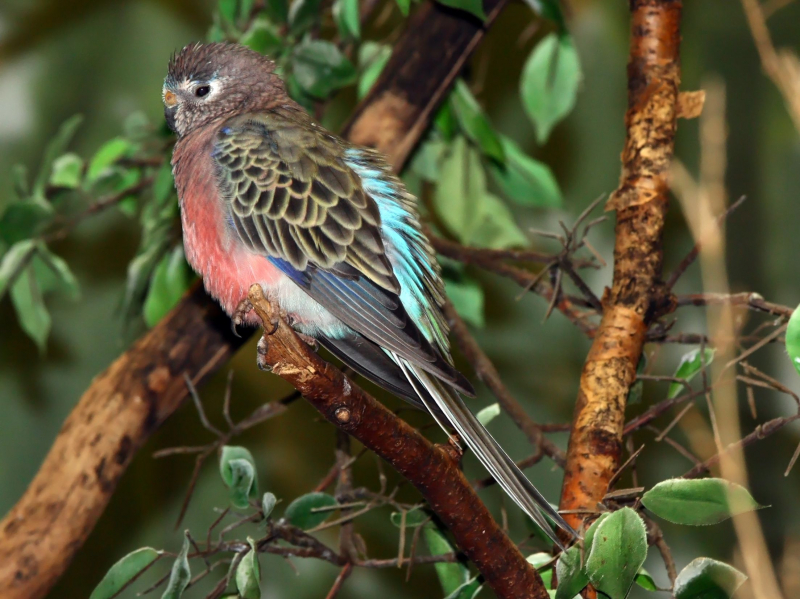
The Spruce Pets -
The only member of the cockatoo family belonging to the genus Eolophus is the Galah (Eolophus roseicapilla), often known as the pink and grey cockatoo or rose-breasted cockatoo. One of the cockatoos with the greatest geographic range is this one in Australia. Galahs build their nests in voids in trees. Usually, there are two to five clutches of white eggs. The process of incubating the eggs, which takes around 25 days, is shared by the male and female. After hatching, the chicks leave the nest after around 49 days.
The galah has a length of around 35 cm and weighs 270–350 g. Its features include a pink face, pink breast, a light pink movable crest, pale silver to grey back, and a pale grey rump. The naked skin of the eye ring is carunculated, and its beak is bone-colored. Its legs are gray. Although the sexes appear to be similar, adult birds have different eye colors. The males have very dark brown (nearly black) eyes, while the females have mid-brown or red eyes. The colors of adults are more vivid than those of juveniles. Juveniles have brown irises with pale, non-carunculated eye rings, a greyish breast, head, and crest.
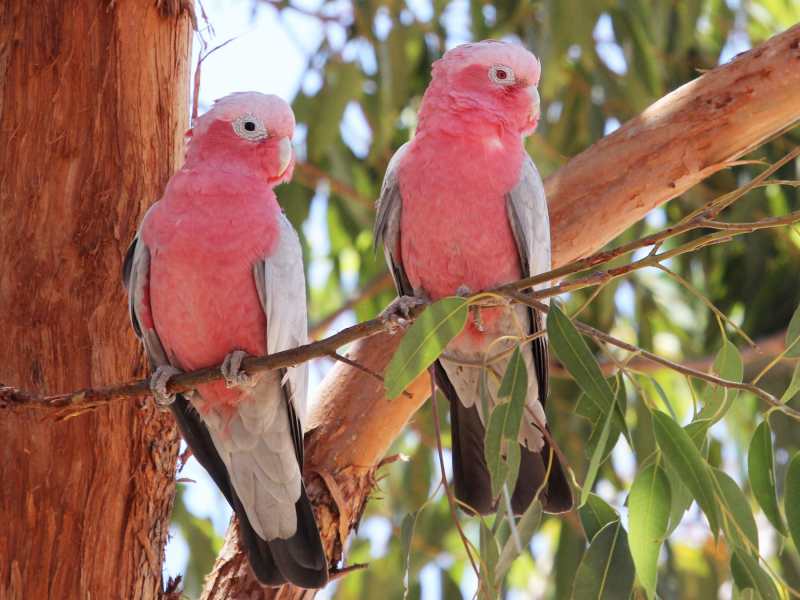
eBird 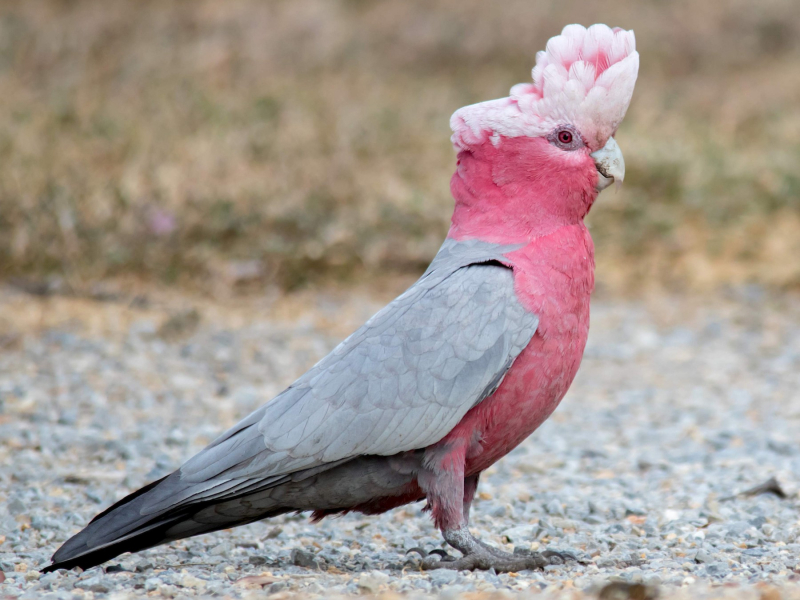
eBird -
Anna's Hummingbird (Calypte anna) is a medium-sized bird species of the family Trochilidae. It was named after Anna Masséna, Duchess of Rivoli. It is indigenous to western North American coastal regions. Only southern California and northern Baja California hosted breeding populations of Anna's hummingbirds in the early 20th century. The species was able to increase its breeding range thanks to the transplantation of exotic decorative plants into residential areas along the Pacific coast and in inland deserts, which offered more nectar and nesting locations.
The wingspan of Anna's hummingbirds is 4.7 inches (12 cm), they range in size from 3.9 to 4.3 in (9.9 to 10.9 cm), and they weigh between 0.1 and 0.2 oz (2.8 to 5.7 g). Their flanks are green, and their back is an iridescent bronze-green with a pale grey belly and chest. They have long, erect, and slender bills. The adult male has a dark, somewhat forked tail and an iridescent crimson-red to reddish-pink crown and gorget, which can seem dull brown or gray in the absence of direct sunlight. Although they are often smaller and less spectacular than those of the males, females also feature iridescent red gorgets.
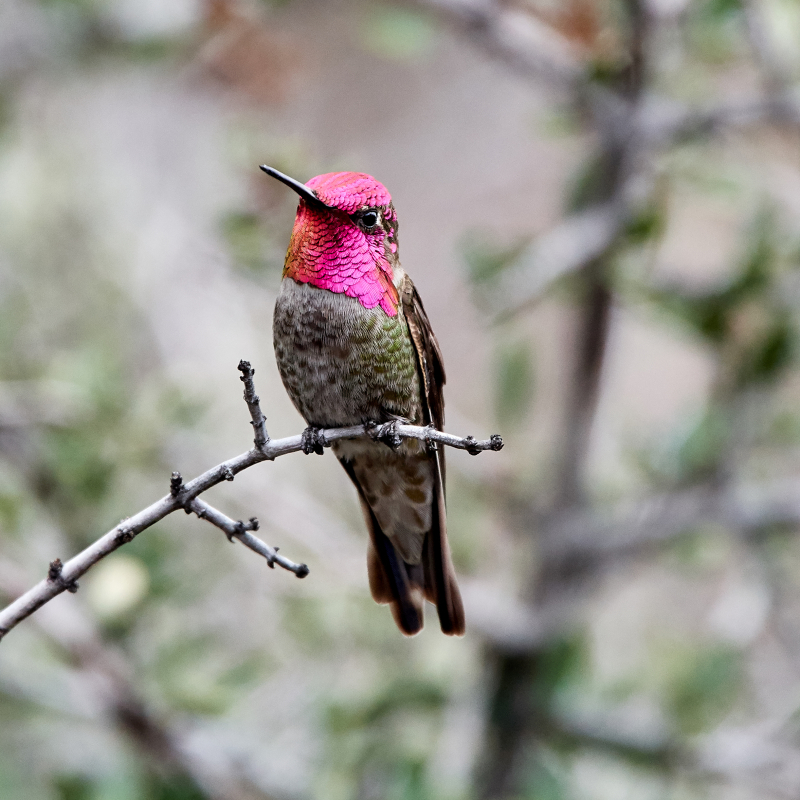
National Park Service 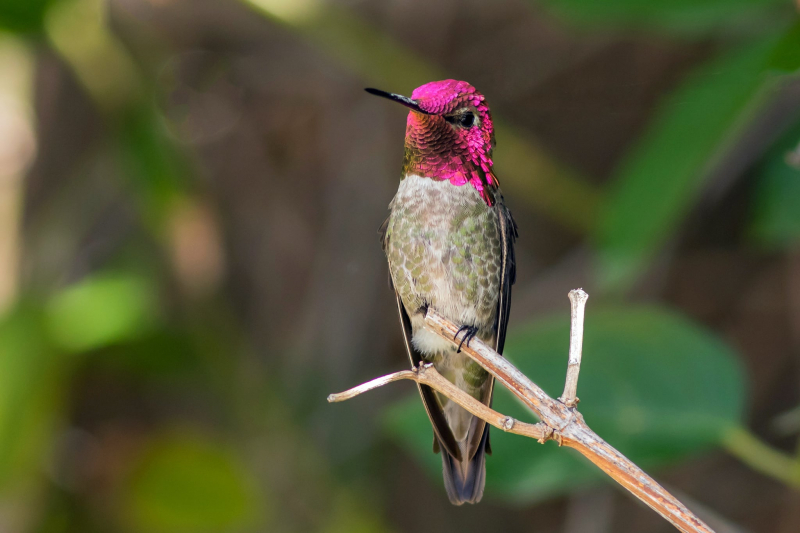
Portland Audubon -
The Roseate Spoonbill (Platalea ajaja) is a gregarious wading bird of the ibis and spoonbill family, Threskiornithidae. It is a resident breeder in both South and North America. This species feeds in shallow fresh or coastal waters by swinging its bill from side to side as it steadily walks through the water, often in groups. The spoon-shaped bill allows it to sift easily through mud. It feeds on crustaceans, aquatic insects, frogs, newts, and very small fish ignored by larger waders.
The roseate spoonbill measures 71–86 cm in length, with a wingspan of 120–133 cm, and weighs 1.2–1.8 kg. Adults have a deep pink color with a naked greenish head (which turns golden buff while breeding) and a white neck, back, and breast (which has a tuft of pink feathers in the center when breeding). The invoice is gray. No discernible sexual dimorphism exists. Similar to the American flamingo, canthaxanthin, a carotenoid pigment, is what gives them their pink color. Astaxanthin, a different carotenoid, is also deposited in body and flight feathers. Depending on the age, whether or not they have been bred, and the region, the colors can range from pale pink to vivid magenta. Spoonbills fly with their necks extended, unlike herons.
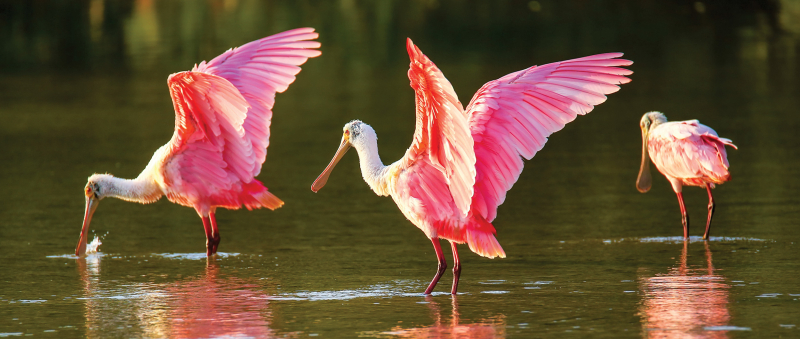
Jekyll Island 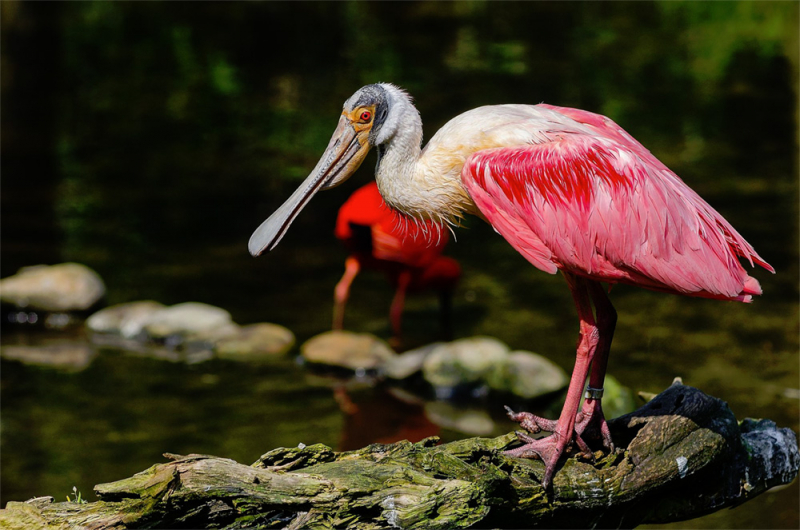
Birdwatchersdigest -
The Salmon-Crested Cockatoo (Cacatua moluccensis), also known as the Moluccan cockatoo, is a cockatoo endemic to the Seram archipelago in eastern Indonesia. It lives in lowland woods below 1000 meters in the wild. Coconuts, seeds, almonds, and fruit make up the majority of the diet. Additionally, pet Moluccan cockatoos have tested positive for anemia if their diet does not contain enough protein, which is consistent with the fact that they consume insects that are on the ground.
It is one of the bigger white cockatoos, growing to a maximum height of 46-52 centimeters and a maximum weight of 850 grams. On average, women are bigger than men. It has a large retractable recumbent crest that it raises when threatened, revealing previously hidden bright red-orange plumes to frighten potential attackers. It also has white-pink feathers with a distinct peachy glow, a slight yellow on the underwing and underside of the tail feathers, and feathers with a yellow undertone. It might also rise in excitement or other "emotional" outward manifestations. The crest has been dubbed "flamingo-colored" by some. It also has one of the loudest sounds among parrots and is a skilled mimic when kept in captivity.
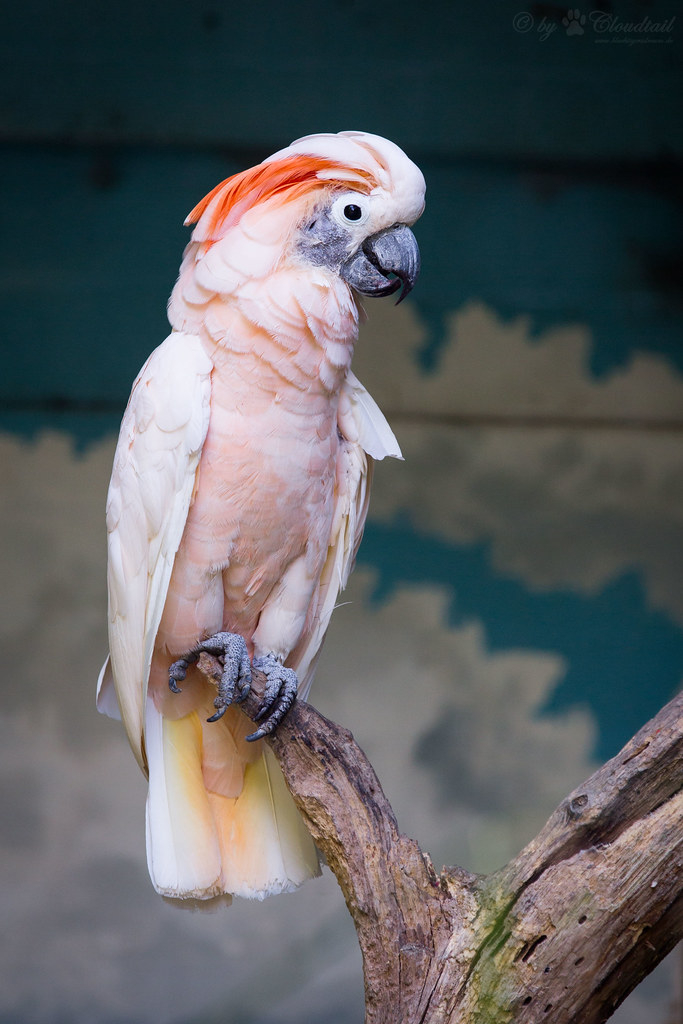
Flickr 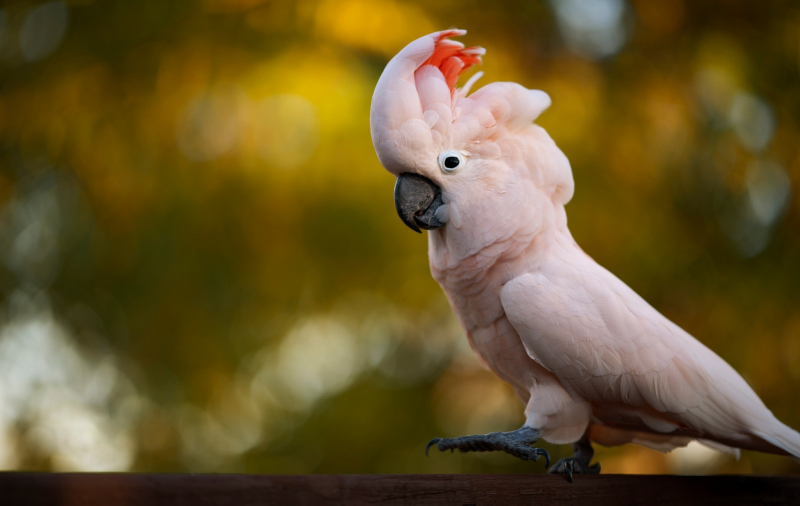
iStock -
Southeast Australia is home to the diminutive passerine bird known as the Pink Robin (Petroica rodinogaster). Cool temperate woods in remote southeast Australia are its natural home. It is sexually dimorphic, like many Petroicidae brightly colored robins. The robin is a little, thin-billed bird that is 13.5 cm long with dark brown eyes and legs. The male has a pink breast, a distinguishing white mark on his forehead, and grey-black upper parts, wings, and a tail. The stomach is white. The female's feathers are gray-brown.
The pink robin and its Australian relatives are not closely related to either the European or American robins, but rather appear to be an early branch of the Passerida group of songbirds, hence its position on the passerine family tree is unknown. September through January are the breeding months. The nest is a clean, deep cup constructed of moss. The nest is often built in a tree fork up to 5 meters (15 feet) above the ground using spider webs, feathers, and hair for binding or filling. There is a clutch of three to four eggs laid. The 18 by 14 mm-sized eggs are characterized by dark brown and lavender splotches and spots, which are typically concentrated near the large end. They are also greyish, greenish, or blueish white.
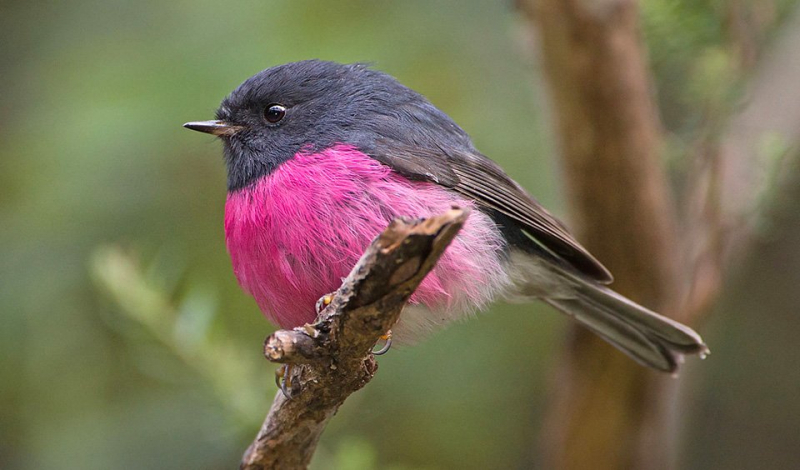
Australian Geographic 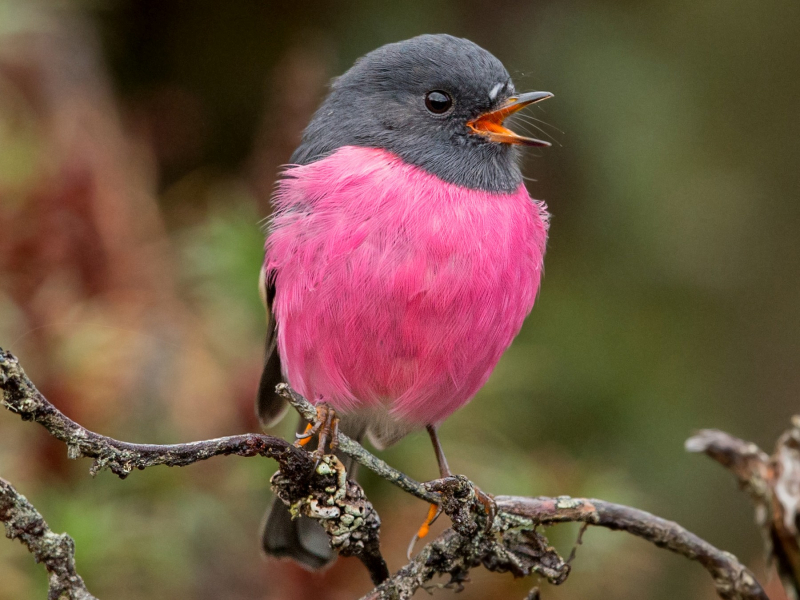
eBird -
The Pink-Headed Fruit Dove, (Ptilinopus porphyreus) also known as the pink-necked fruit dove or Temminck's fruit pigeon, is a small colorful dove. It is a resident breeding endemic bird in Indonesia that can be found in the Sumatran, Javan, and Balin highland forests at elevations between 1000 and 2200 m. It erects a flimsy nest in a tree and deposits one or occasionally two white eggs, which are then incubated for 20 days before hatching and for an additional 15 to 16 days before fledging. It is a quiet and unassuming species that is typically observed alone or in pairs, but under preferred fruit trees, flocks of up to 17 birds may assemble.
The male's head, neck, and throat are purple-pink, and a white band below them is outlined in a greenish-black color. The underparts are grey with yellow under tail coverts, while the upperparts are green. The feet are pink, the bill is a shade of green, and the iris is orange. The juvenile is a more drab rendition of the female than the adult, who is duller and has a weaker breast band. It sounds like a quiet hoo. This dove lives in the high canopy of the forest, where it is well-hidden by the emerald foliage and eats figs, a tiny fruit, and berries.
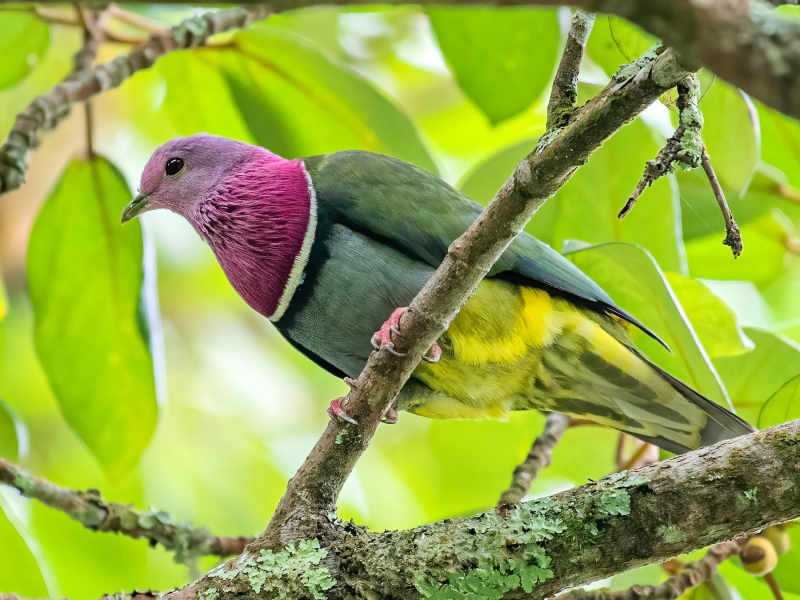
eBird 
eBird -
Major Mitchell's Cockatoo (Lophochroa leadbeateri), also known as Leadbeater's cockatoo or the pink cockatoo, is a medium-sized cockatoo that inhabits arid and semi-arid inland areas of Australia, though it is seen regularly in other climates, for example, South-East Queensland's subtropical region. Unlike other cockatoos, Major Mitchell's pairs will not nest close to one another, so they cannot tolerate fragmented, partly cleared habitats, and their range is contracting.
It is frequently referred to as the most beautiful of all cockatoos due to its enormous, vivid red and yellow crest and soft-textured white and salmon-pink plumage. It is named in honor of Major Sir Thomas Mitchell, who wrote, "Few birds more enliven the monotonous hues of the Australian forest than this beautiful species whose pink-colored wings and flowing crest might have embellished the air of a more voluptuous region". Male and female Major Mitchell's cockatoos are nearly identical. Typically, males are larger. When grown, the female's eyes turn crimson and she has a wider yellow stripe on her crest.
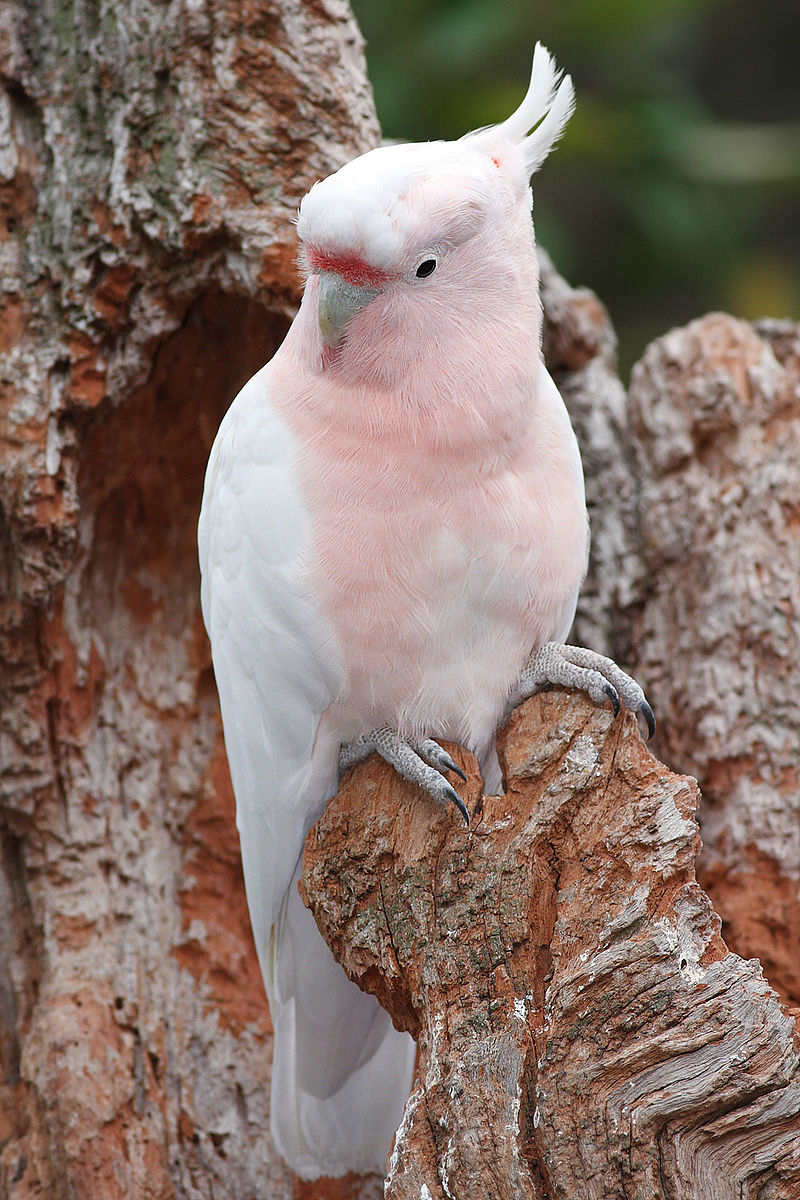
Wikimedia Commons 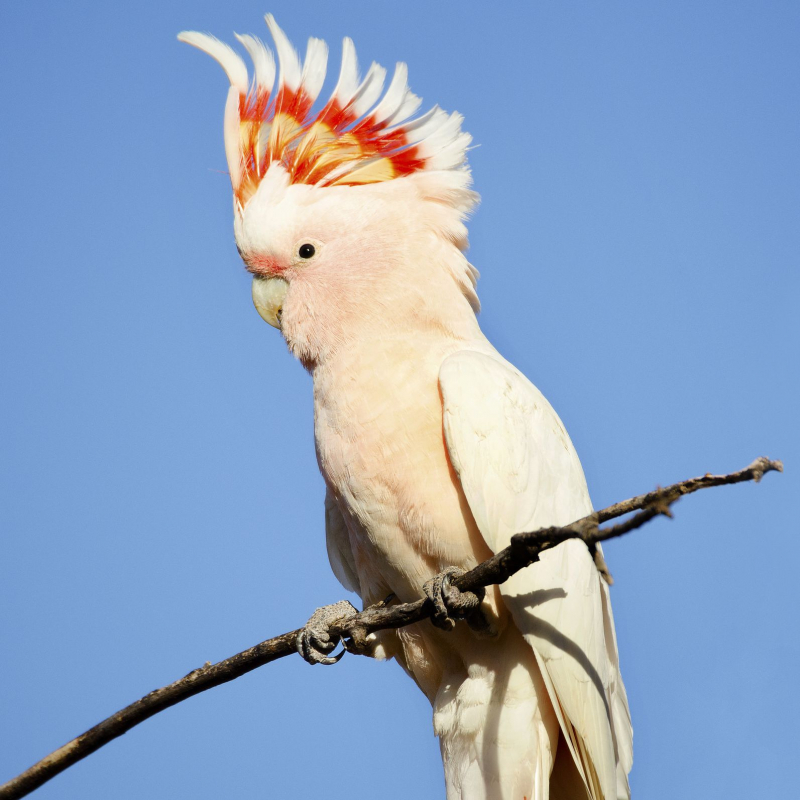
The Spruce Pets -
The American Flamingo (Phoenicopterus ruber) is a sizable species of flamingo that lives in the Neotropics and is closely related to the greater and Chilean flamingos. It was previously thought to be conspecific with the greater flamingo, but due to a dearth of evidence, this treatment is now widely disregarded (e.g. by the American and British Ornithologists' Unions). Despite being prevalent on the Galápagos Islands as well, it is also referred to as the Caribbean flamingo. It is the only flamingo that lives in North America natively.
Adult American flamingos are smaller on average than greater flamingos but are the largest flamingos in the Americas. Most of its plumage is pink, giving rise to its earlier name of rosy flamingo and differentiating adults from the much paler greater flamingo. The wing coverts are red, and the primary and secondary flight feathers are black. The bill is pink and white with an extensive black tip. The legs are entirely pink. The call is a goose-like honking.
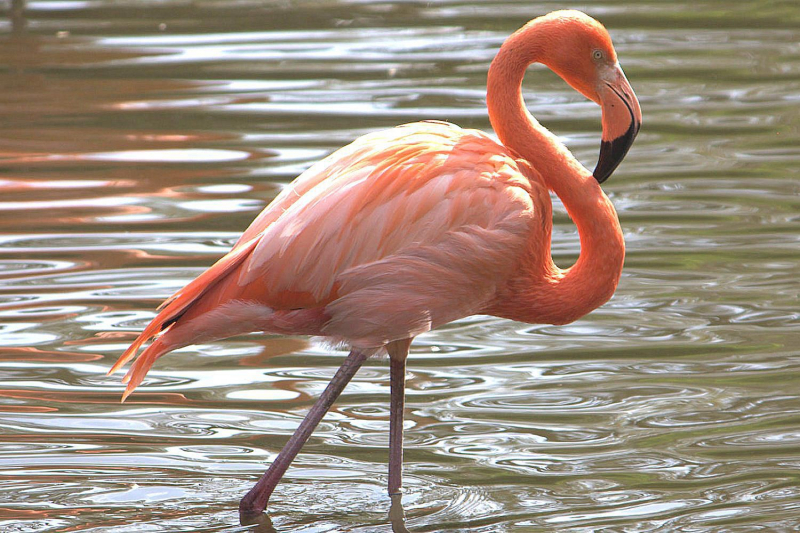
The Spruce 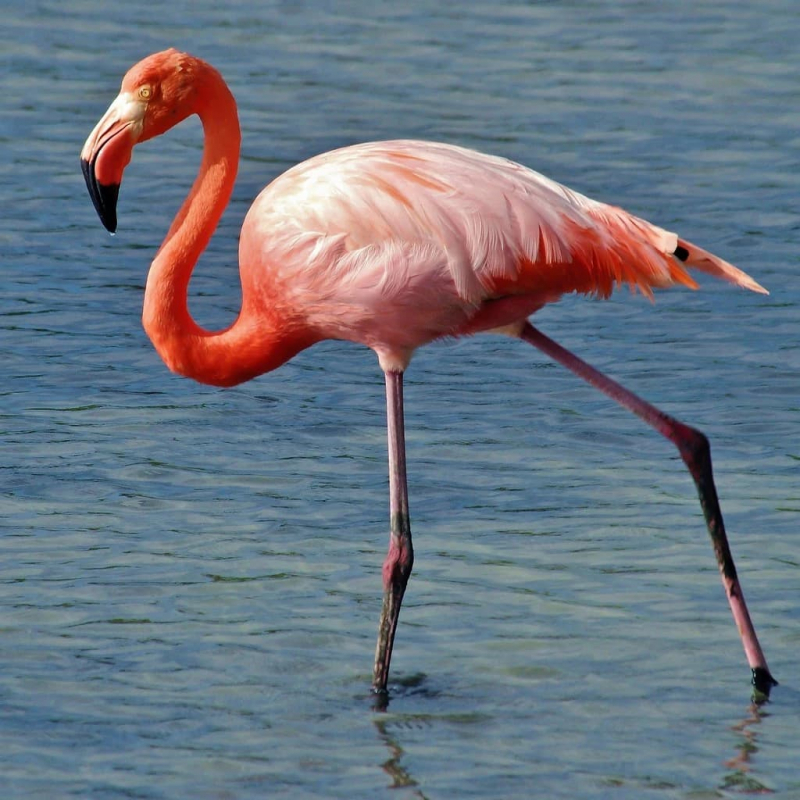
Birds Wiki - Fandom












